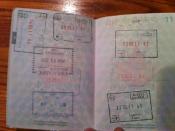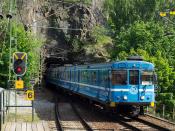In April 1964, a delivery contract for ten complete engines and for an electrical installation for another 28 engines that were to be built in Romania was signed between CFR and the Swedish company ASEA. For 21 engines, ASEA insured the complete electrical devices and for the other 17 a part of the electrical installation had already been produced under pattern in Romania. The Romanian company designated to execute the setting and sub-assemblies of the mechanical and electrical parts was Electroputere, in Craiova (EPC) that already had a license to manufacture electrical Diesel 2100 CP engines.
The type of engine ordered by the offer tender was totally different from the prototypes Rb1, being assembled on six axes (Co'Co) with a power of 5400 kW and electrical brakes. The conception of the electrical system was typical for ASEA: mono-contiguous engine with silicate diode and high voltage tractor engine tuning.
The first of the ten complete engines delivered by ASEA with the register number CFR 060-EA-001 was finished by the end of 1965, the next eight were delivered in 1966 and the last one under no 060-EB-001 had an experimental electric device with semi-commanded reducers with mixed joints.
The locomotives 060-EA-001...008 had a maximum speed of 120 km/hour and 060-EA-009 had a maximum speed of 160 km/hour. The design and construction of the engines was made so that the exploitation maintenance will be as reduced as possible. Thus, by using rubber elements on joints and elastic element on the mushroom caps, the need to oil them was eliminated. The electric equipment was placed in drawers that could be easily replaced just like a piece of furniture. The engine casing was a mobile welded construction. The two mushroom caps with three axes were bound by transversal elastic coupling acting to reduce the bending...


